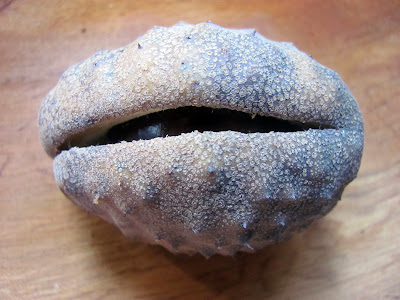woolly bear -- black hair
curled in a ball under a log
waiting for winter
Isabella usually goes with the black and orange look for Halloween, but this year she dyed her spiky hair all black. I found her curled up under a log, taking a nap.
Isabella is a woolly bear caterpillar, and she's not the only one to change her costume. Every single one of the woolly bears I've seen crossing the highway in search of a hidey-hole for the winter have all-black bristles. In all my years of watching woolly bears, I've never seen anything like it. What does it mean?
The woolly bear, which is neither a bear nor woolly, is the bristly larva of the Isabella tiger moth. The caterpillar has 13 segments, normally orange-brown in the middle and black on both ends. According to legend, the wider the brown band, the milder the coming winter, so no brown at all would predict a really hard winter. But is it true?
According to Mike Peters, an entomologist at the University of Massachusetts, the number of brown hairs indicates the age of the caterpillar, reflecting how late it emerged in the spring. A heavy winter or an early spring the previous year would result in a wider brown band. If that's true, then we should have had a harsh winter last year, but actually it was fairly warm with little snow, unlike most winters in Iowa.
So who knows, maybe the woolly bears just wanted a new look this year.














